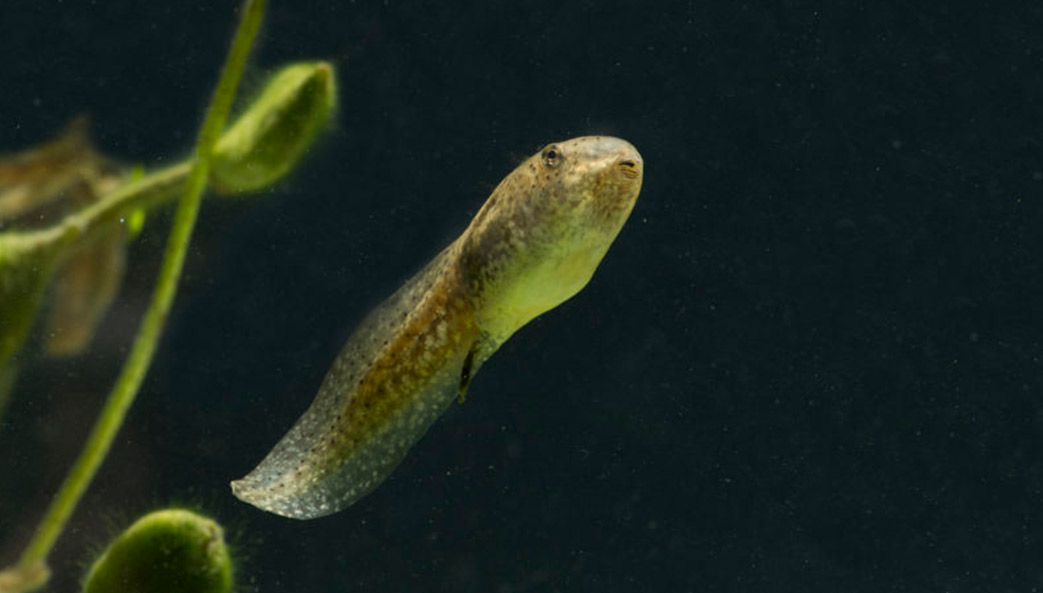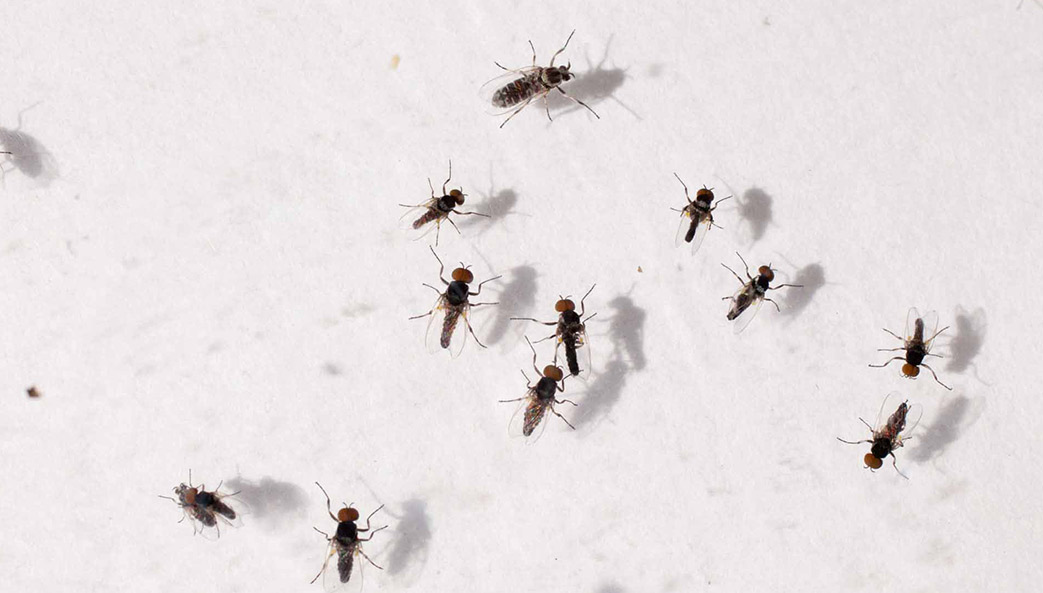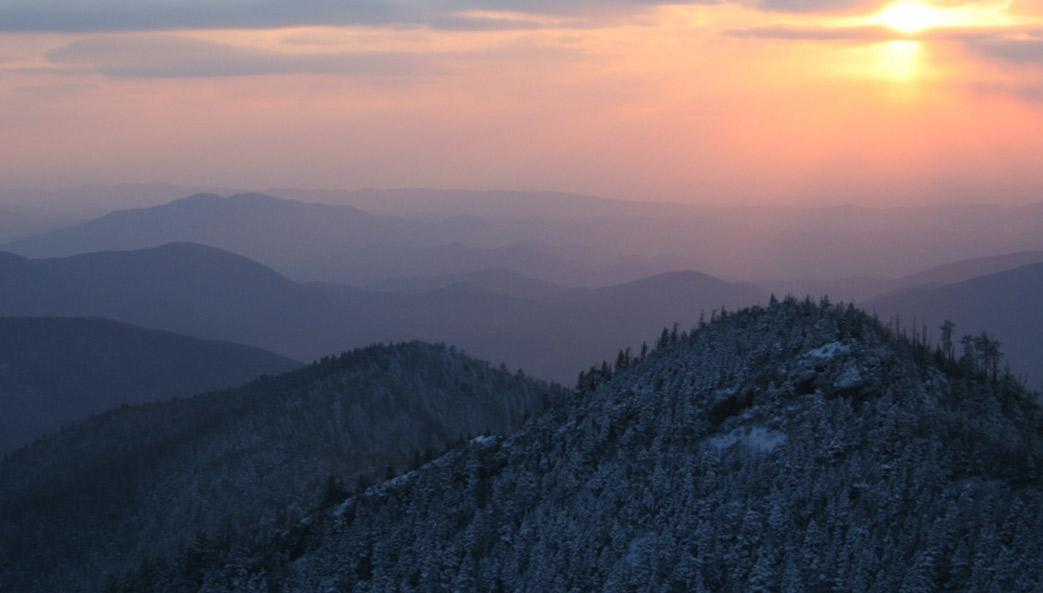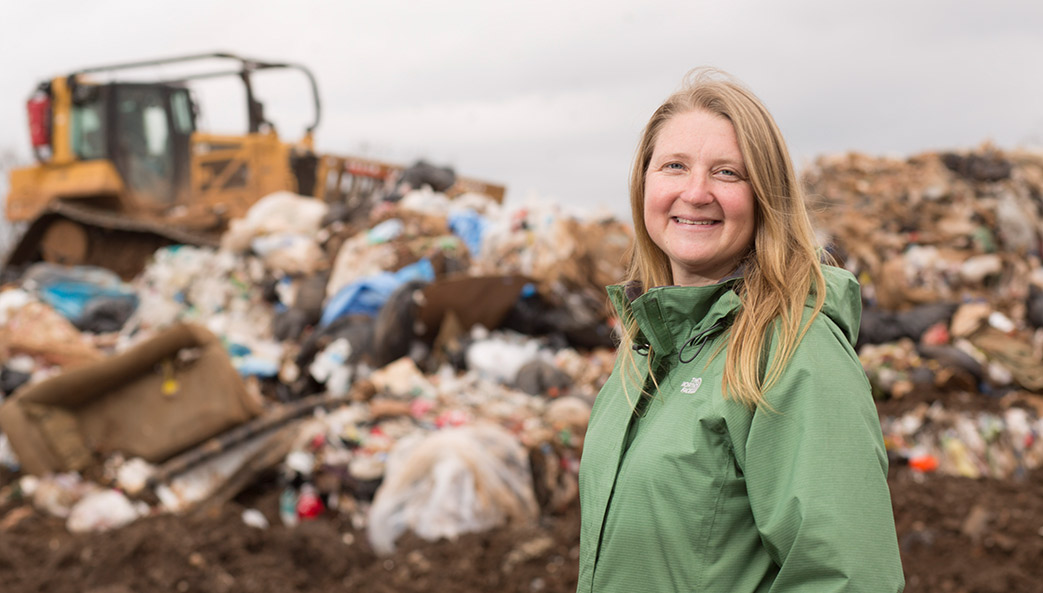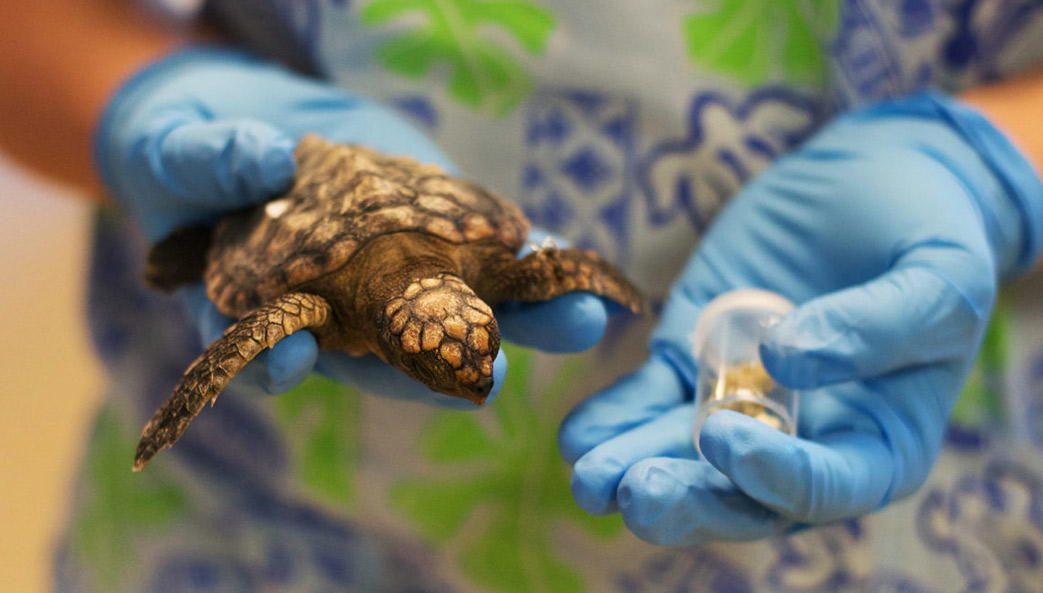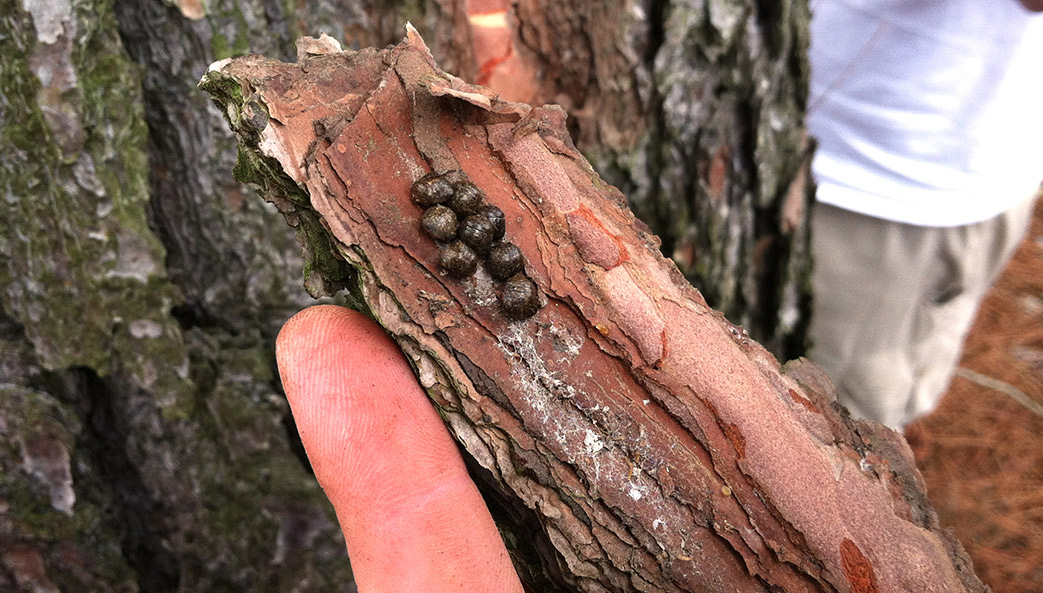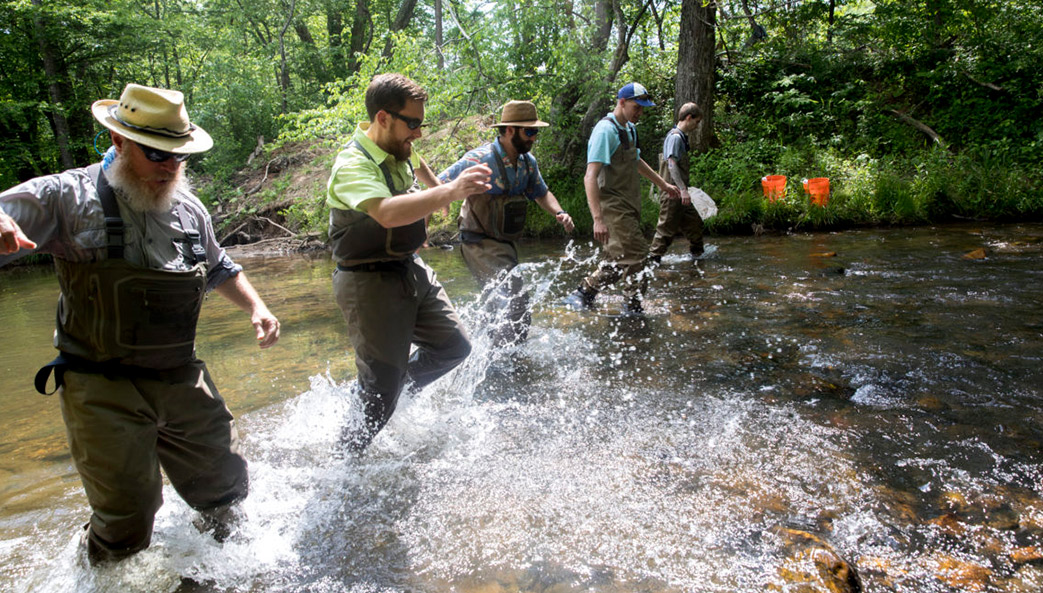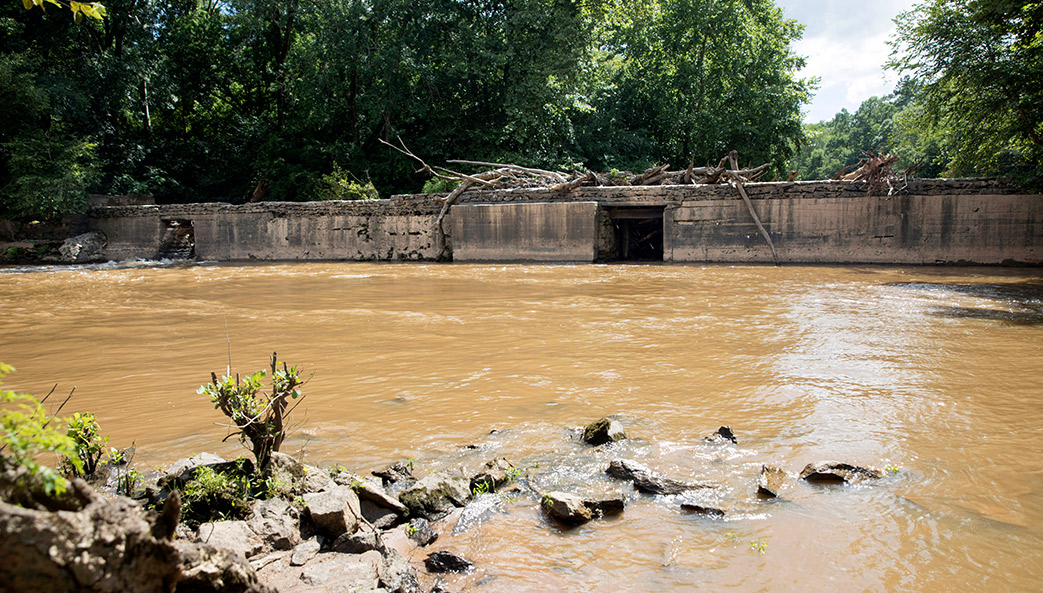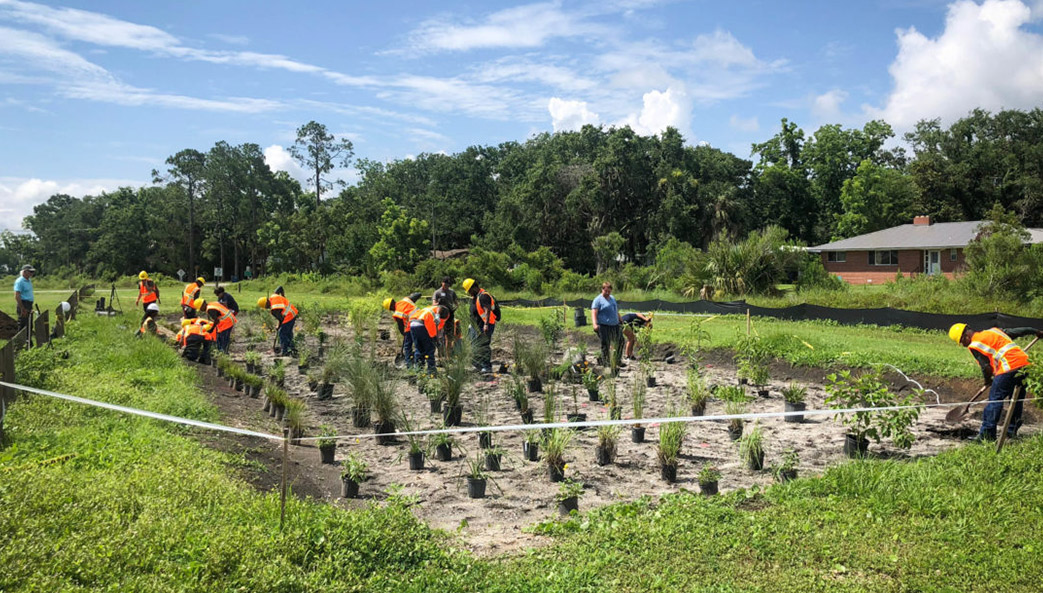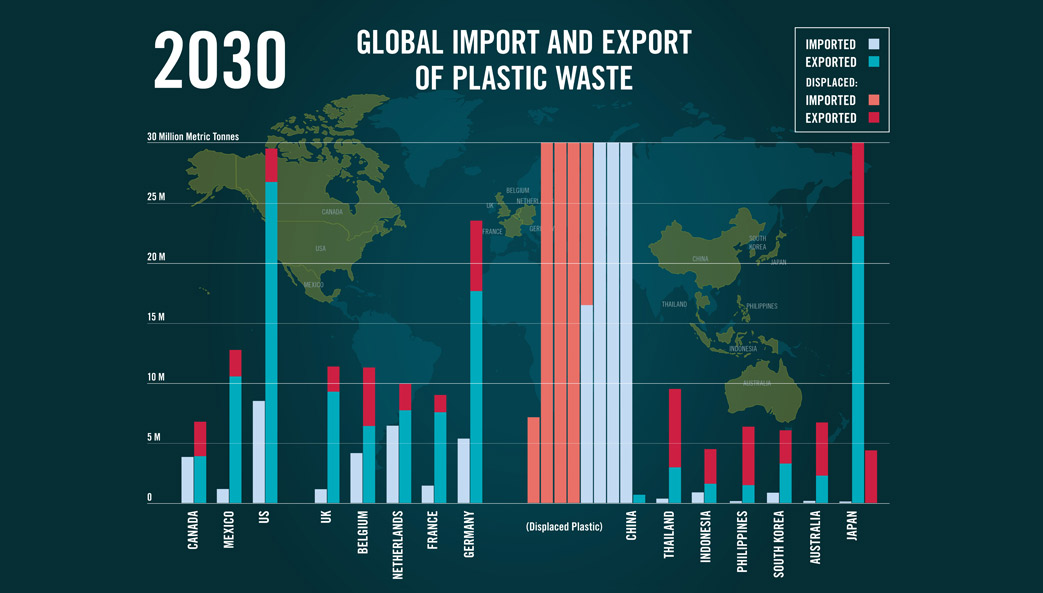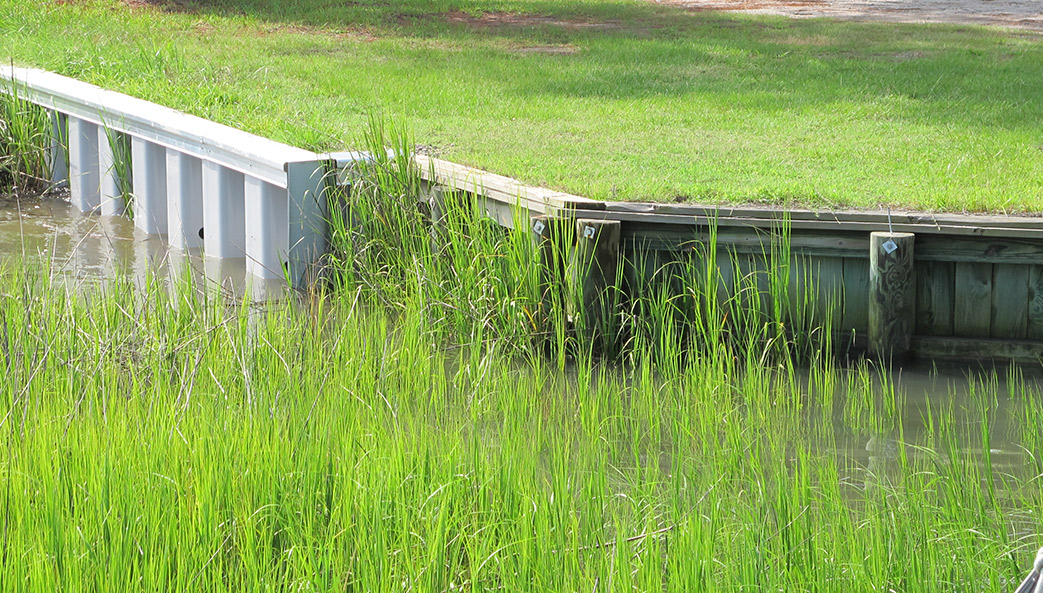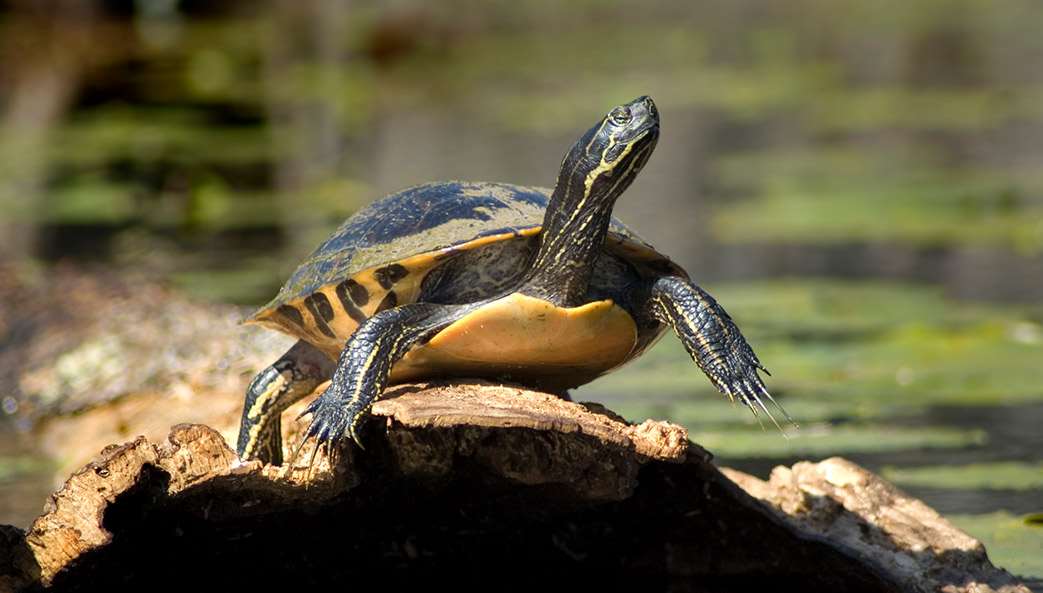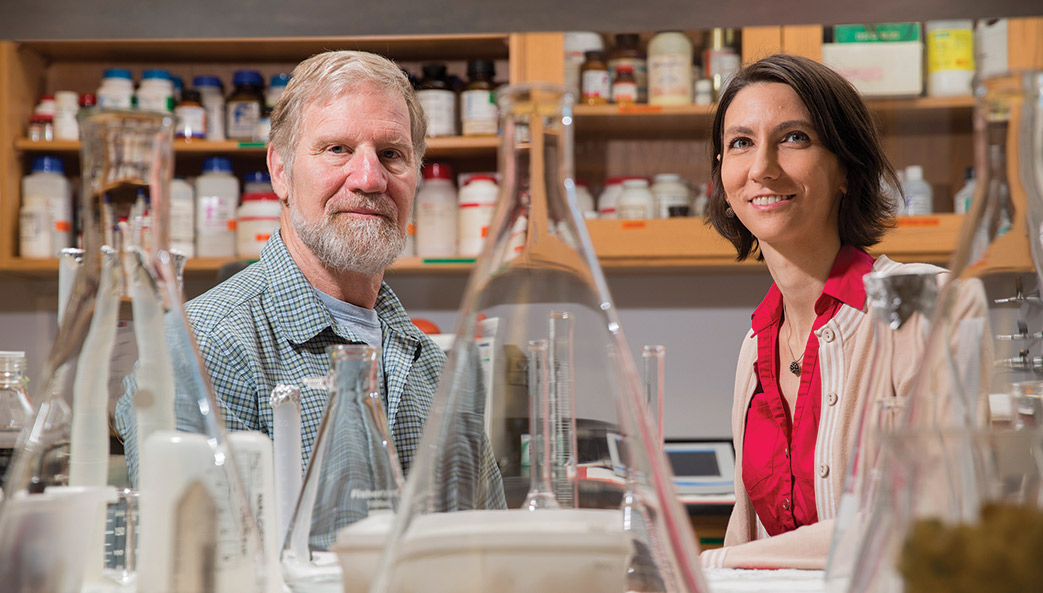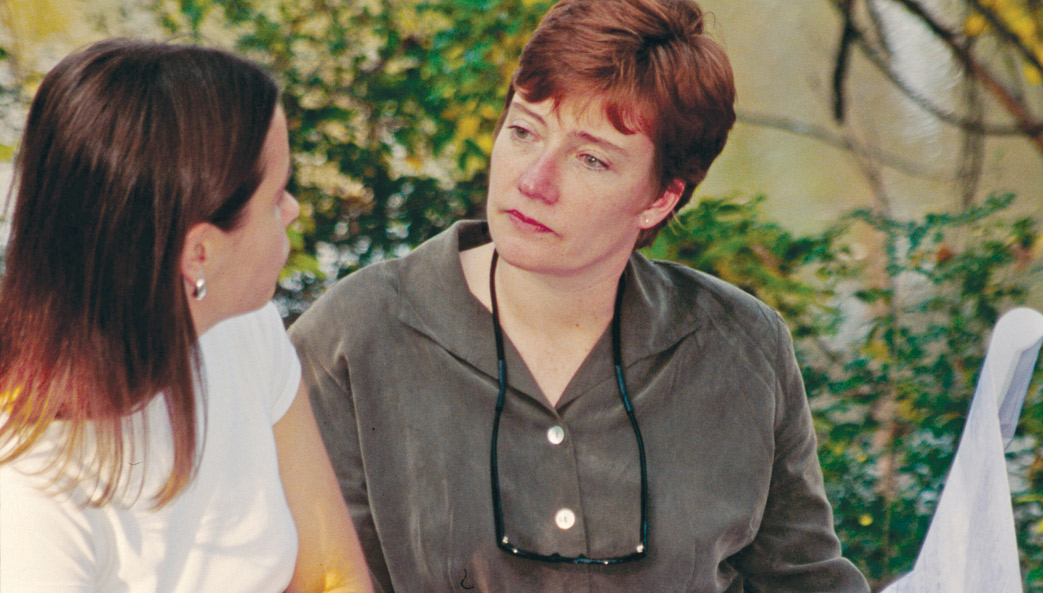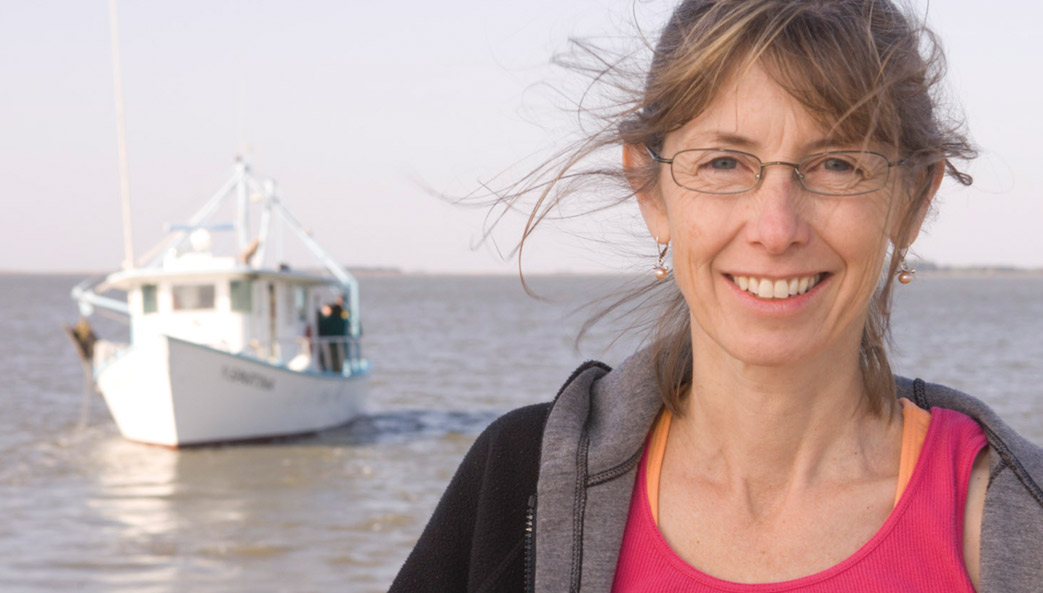Clean rivers and lots of rain means the return of gnats to north Georgia
Heavy rain and gorging rivers increase the presence of gnats
Support for wilderness protections in the Southern Appalachians
Nearly 90 percent of those who had visited a wilderness area thought more wildlands should be protected
California burning
UGA alumnus and research scientist Jon Keeley provides insight into the Golden State’s devastating wildfires
Animal carcasses were source of river nutrients
Research suggests that current models of freshwater ecosystems are incomplete
Gardening practices can be tailored for pollinators
UGA researchers conducted a review and meta-analysis to formulate a more focused approach to establishing healthy habitats for pollinators.
Gardening practices can be tailored for pollinators
UGA researchers conducted a review and meta-analysis to formulate a more focused approach to establishing healthy habitats for pollinators.
UGA is committed to campus-wide sustainability
Partnerships with Athens-Clarke County cement the UGA’s commitment to social, environmental and economic stewardship
‘Stat of the Year’
A finding from University of Georgia research has been named the 2018 International Statistic of the Year by the Royal Statistical Society.
Fractured food chain
Sea turtles are known to mistake ocean plastics for prey, like crab or fish eggs
“Wild Spotter” will help track and stop spread of invasive species
Smartphone app lets citizen-scientist volunteers identify and report unfamiliar species
Students learn by doing in Warnell fisheries class
Course takes students into the field to learn skills essential for aspiring fishery experts
Dam modifications will improve aquatic connectivity and wildlife mobility
Changes are based on multiple studies by Warnell faculty and students
‘National Sword’ cuts deep
More than 100 million metric tons of plastic waste will be displaced due to China’s ban on imports
New research focuses on CO2 in streams
Model predicts how rising temperatures will affect streams’ absorption or emission of carbon dioxide
Building better plants
Mindful of climate change and an increasing population, researchers are finding ways to make plants more resilient
The coast is not so clear
UGA marine scientists help evaluate coastal protection strategies and their ecological effects
Plastic planet
Benjamin Braddock, a recent college graduate, was wandering aimlessly through a party thrown in his honor when he was accosted by a family friend named McGuire.
“I just want to say one word to you,” he said ominously. “Just one word.”
The word? Plastics.
“There’s a great future in plastics,” McGuire told an unenthusiastic Braddock. “Think about it.”
The year was 1967, and “The Graduate” was winning over movie audiences and critics alike. The tale of Braddock’s post-graduation hijinks and soul searching was a box office hit that earned several Academy Award nominations and a win for director Mike Nichols.
McGuire was right—there was a bright future in plastics, but there was also a price. Fifty years later, new research documents that humans have created 8.3 billion metric tons of plastics since large-scale production began in the early 1950s, and most of it now resides in landfills or the natural environment, according to a study published in the journal Science Advances.
Led by a team of scientists from the University of Georgia, the University of California, Santa Barbara (UCSB) and the Sea Education Association (SEA), the study is the first global analysis of the production, use and fate of all plastics ever made.
The researchers found that by 2015, humans had generated 8.3 billion metric tons of plastics, 6.3 billon tons of which had already become waste. Of that waste total, only 9 percent was recycled, 12 percent was incinerated and 79 percent accumulated in landfills or the natural environment.
If current trends continue, roughly 12 billion metric tons of plastic waste will be in landfills or the natural environment by 2050. Twelve billion metric tons is about 35,000 times as heavy as the Empire State Building.
“Most plastics don’t biodegrade in any meaningful sense, so the plastic waste humans have generated could be with us for hundreds or even thousands of years,” said Jenna Jambeck, study co-author and associate professor of engineering at UGA. “Our estimates underscore the need to think critically about the materials we use and our waste management practices.”
The scientists compiled production statistics for resins, fibers and additives from a variety of industry sources and synthesized them according to type and consuming sector.
Global production of plastics increased from 2 million metric tons in 1950 to over 400 million metric tons in 2015, according to the study, outgrowing most other man-made materials. Notable exceptions are materials that are used extensively in the construction sector, such as steel and cement.
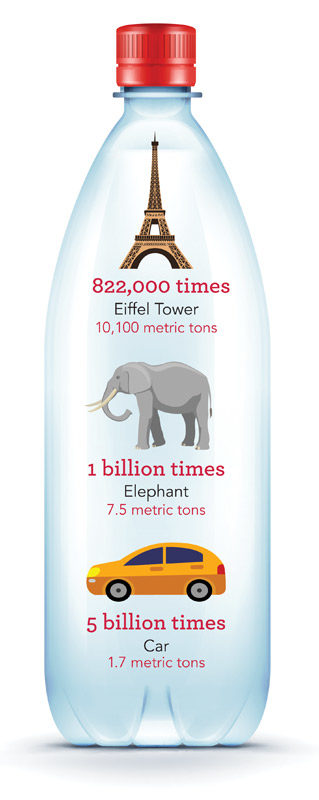
But while steel and cement are used primarily for construction, plastics’ largest market is packaging, and most of those products are used once and discarded.
“Roughly half of all the steel we make goes into construction, so it will have decades of use—plastic is the opposite,” said Roland Geyer, lead author of the paper and associate professor in UCSB’s Bren School of Environmental Science and Management. “Half of all plastics become waste after four or fewer years of use.”
And the pace of plastic production shows no signs of slowing. Of the total amount of plastics produced from 1950 to 2015, roughly half was produced in just the last 13 years.
The researchers are quick to caution that they do not seek the total removal of plastic from the marketplace, but rather a more critical examination of plastic use and its end-of-life value.
“There are areas where plastics are indispensable, especially in products designed for durability,” said paper co-author Kara Lavender Law, a research professor at SEA. “But I think we need to take a careful look at our expansive use of plastics and ask when the use of these materials does or does not make sense.”
The same team of researchers led a 2015 study published in the journal Science that calculated the magnitude of plastic waste going into the ocean. They estimated that 8 million metric tons of plastic entered the oceans in 2010.
“There are people alive today who remember a world without plastics,” Jambeck said. “But they have become so ubiquitous that you can’t go anywhere without finding plastic waste in our environment, including our oceans.”
This story appeared in the fall 2017 issue of Research Magazine. The original press release is available at http://news.uga.edu/releases/article/scientists-calculate-total-amount-of-plastics-ever-produced/.
Reptile serves as barometer for coal waste
Researchers measured trace elements in yellow-bellied sliders
Water temperatures threaten ecosystems
Increasing water temperatures are responsible for the accumulation of a chemical called nitrite in marine environments throughout the world.
Protecting Georgia’s rivers, lakes and wetlands
By Beth Gavrilles
Photo: Paul Efland
Above: Laurie Fowler (left, with a former student in 2000) has been instrumental in forging a water management plan for the Apalachicola-Chattahoochee-Flint water basin.
Whether negotiating whitewater rapids in her kayak, taking an early-morning swim across a lake or hiking beside a mountain stream, Laurie Fowler has always been at home in or near the water. So it was no surprise when she graduated from the UGA School of Law in 1983 that her goal was to use what she’d learned to protect Georgia’s rivers, lakes and wetlands.
Today, as co-director of the UGA’s River Basin Center, faculty member in the Odum School of Ecology and adjunct faculty member in the School of Law, her goal hasn’t changed—but as the issues affecting water and the laws designed to deal with them have evolved, so has her approach.
In 1983, the nation’s major environmental laws were still new, and many of the details of their intent and enforcement were murky.
“State and federal agencies in many cases lacked the resources to compel compliance with laws like the Clean Water Act,” Fowler said. “And it wasn’t always clear that the regulations the agencies had enacted were really what the Congress intended. There were a lot of public interest lawsuits—and I was involved with some of them—to clarify that.”
Early regulations focused on reining in “point source” pollution—the kind that comes from an identifiable outlet such as a factory smokestack or sewage pipe. And although regulations proved increasingly successful in achieving that goal, that still left a major type of pollution essentially unrestricted: the nonpoint source pollution that comes from many places at once and for which no single entity is responsible.
As a law student, Fowler had sought out Eugene Odum, then the director of UGA’s Institute of Ecology, to learn about the science of ecology to complement what she was learning about environmental law.
“Even then, Dr. Odum was telling me that what was going to become more important was looking at and addressing what was happening on the land—looking at the volume and contents of stormwater nonpoint source pollution, for example—to protect water quality,” she said. “And today it’s acknowledged that nonpoint sources of pollution outweigh point source pollution in both volume and impact in many communities.”
Fowler believed that science-based policy development, planning and land conservation could be far more effective against such a decentralized threat. To put these ideas into practice, she returned to UGA and established the environmental practicum. This program brings together graduate students from law, ecology and other fields to solve real-world problems for local governments, state agencies and nonprofits. In 2003, she became co-director for policy of the River Basin Center, which draws faculty and students from across campus to work on sustainable management of aquatic resources and ecosystems through applied scientific and policy research.
Fowler and her students and colleagues have been at the forefront of researching and communicating the scientific and legal underpinnings of land conservation and planning tools to protect water quality. Their findings inform state laws and local ordinances and are used by agencies like the Georgia Department of Natural Resources, Metro North Georgia Water Planning District and Department of Community Affairs.
Over time, the nature of the environmental problems Fowler grapples with have changed, and so has the legal landscape for addressing them.
She points in particular to recent Supreme Court decisions. These rulings, she said, require environmental rule-makers to produce more scientific evidence to show that each new regulation “is actually a legitimate way to go about addressing the problem.”
Fowler believes that this new legal landscape for environmental regulations increases the relevance of the River Basin Center and similar institutions. “We are addressing both the scientific justification and developing the policy that will most effectively achieve what the science says we need to achieve to protect the resource,” she said.
One of the recent problems that Fowler has tackled—water availability—was not even on the horizon when she started her career.
In 2014, a group of municipalities, power companies and environmental advocacy organizations in the Apalachicola-Chattahoochee-Flint watershed asked Fowler and the River Basin Center for help. Frustrated with the lack of progress in the long-running dispute between Georgia, Florida and Alabama, they wanted to create a water management plan and an institutional framework for administering it. Fowler organized a consortium of institutions from the three states to identify strategies for sustainable trans-boundary management, which the stakeholders group is now working toward implementing.
Apalachicola-Chattahoochee-Flint River Water Basin
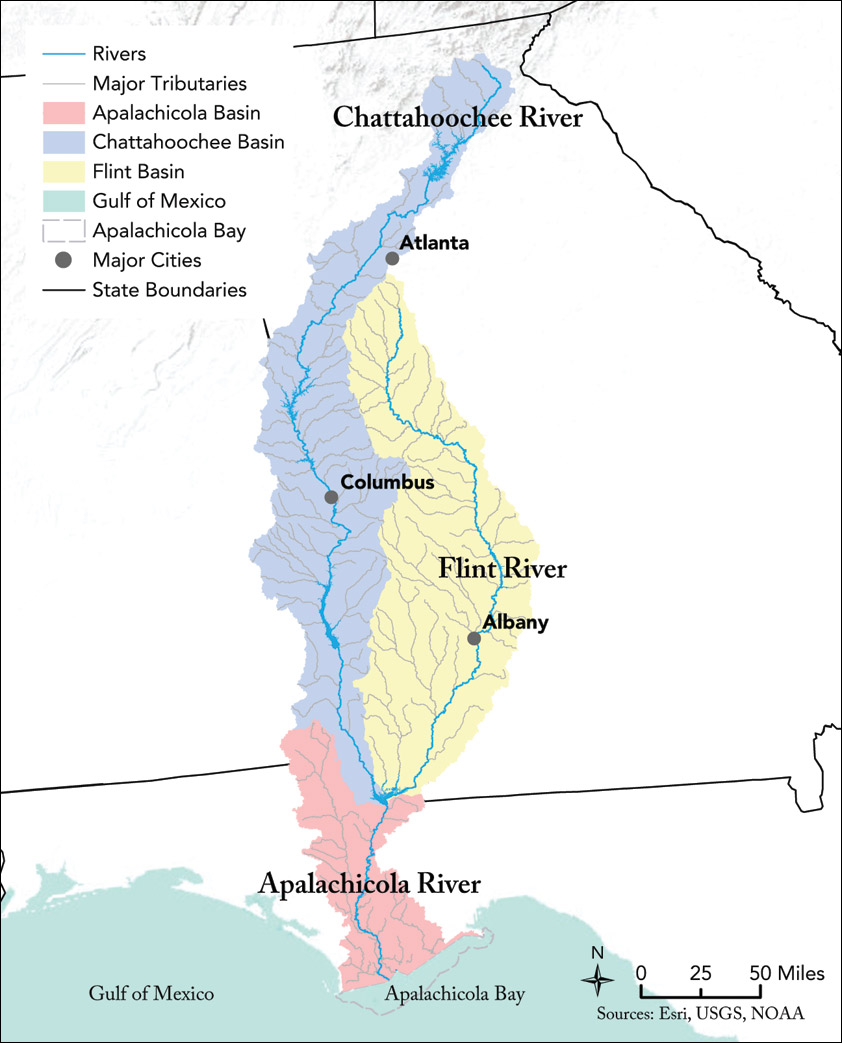
Finally, Fowler said, the need for meaningful stakeholder input and communication with the public has become more critical than ever.
“We are all nonpoint polluters, and we need to make sure our personal actions don’t contribute to the problem,” she said. “We have to support local government in their efforts to control pollution through land use planning, regulation, incentives and paying for infrastructure through property taxes, local sales taxes and user fees. That means we have to make sure the regulated community can live with these strategies.”
That’s why Fowler is excited about two new programs she recently helped start. One is a bachelor of arts in ecology degree program, which is designed for students who want to go into careers in fields like environmental law, journalism and sustainability. A prime example of UGA’s experimental learning initiative, it provides training in communication as well as a solid grounding in science. The second program is Watershed UGA—a university-wide initiative to foster a culture of sustainability through research, teaching and service.
“It doesn’t matter if we know what the science says about pollution targets, water needs, etc., if we aren’t able to communicate that to the public,” Fowler said. “We have to make people both care about and understand the importance of environmental protection.”
Shades of Green
Engineers and polymer scientists with UGA’s New Materials Institute are helping the Massachusetts-based company Norton Point test its “ocean plastics” products and find new product applications.
Coal burning linked to toxic contaminants found in raccoons
Ash accumulates in the livers of raccoons that forage for their food in and around the ponds containing the waste.
Researchers receive Moore Foundation grant to study the global ocean microbiome
A $1.3 million grant from the Gordon and Betty Moore Foundation will allow University of Georgia researchers to uncover answers about an important metabolic link that takes place in the Earth’s oceans.
Salt marsh struggles
Scientists at UGA’s Marine Institute at Sapelo Island have found that the amount of vegetation along the Georgia coast has declined significantly in the last 30 years, spurring concerns about the overall health of marshland ecosystems in the area.
Uncharted waters
A reef system has been found at the mouth of the Amazon River, the largest river by discharge of water in the world.

